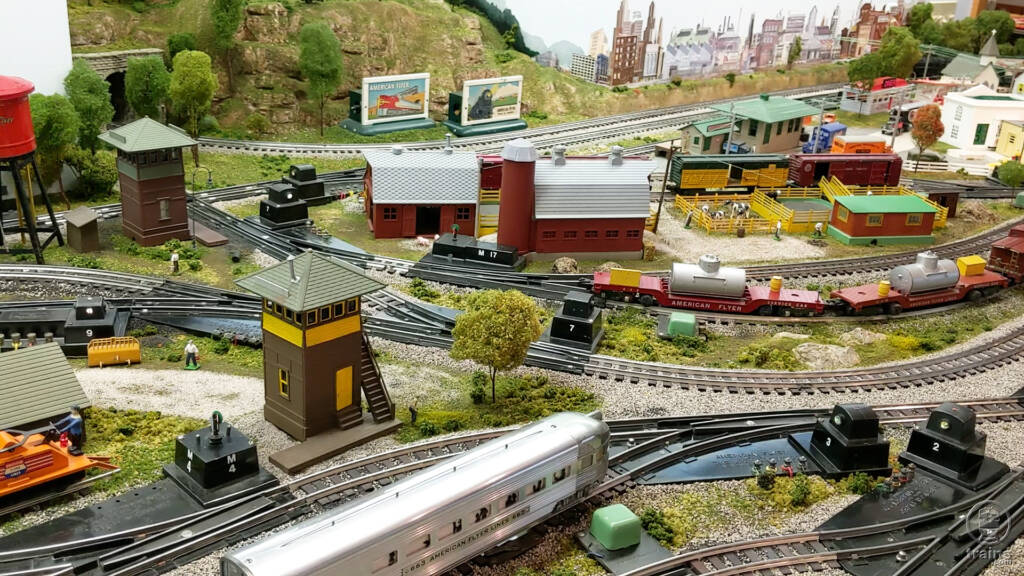
At a glance Name: Gary Wronkiewicz’s S gauge layout Dimensions: 10 x 16 feet Track: GarGraves flextrack (diameters range from 40 to 80 inches) Switches: Gilbert American Flyer Motive power: Gilbert American Flyer, S-Helper Service Rolling stock: Gilbert American Flyer Controls: Gilbert American Flyer No. 12B transformer Accessories: Gilbert American Flyer, Marx Structures: Atlas O, […]
Read More…
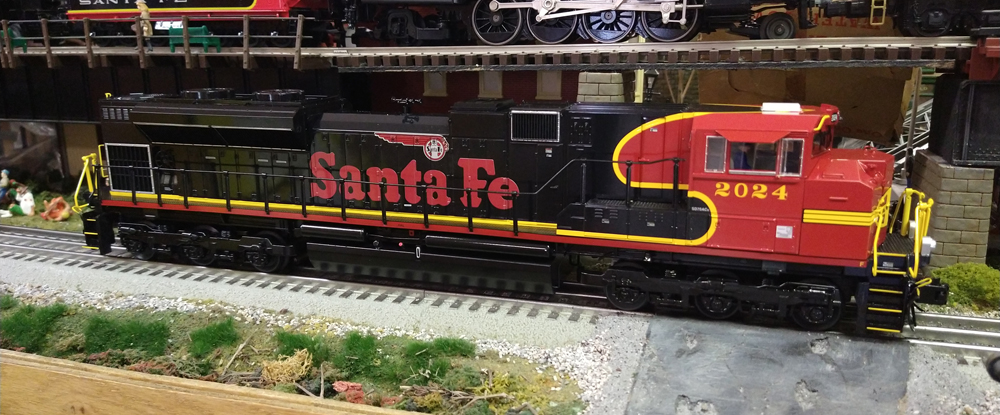
Locomotives & rolling stock MTH has a series of Christmas items as part of their RailKing line. Available items include an O gauge Railing Alco PA A unit diesel (30-21253, $399.95, shown), an ES44AC Imperial diesel engine (30-21238, $399.95), a 4-car double-door plugged boxcar set (30-70131, $349.95), and much more. Delivery expected in October 2024. […]
Read More…
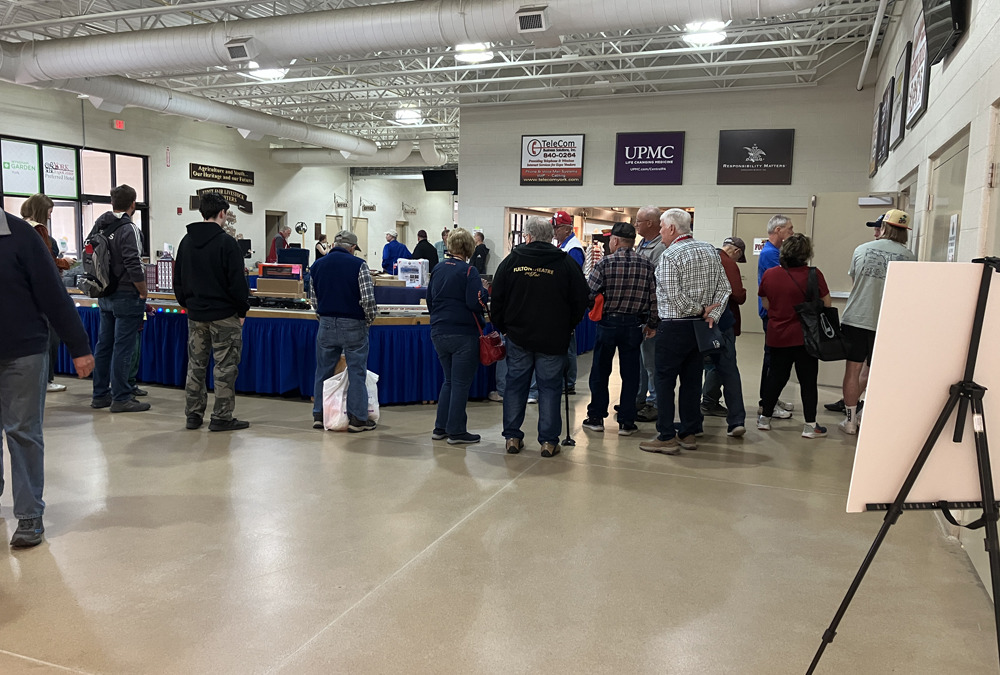
While working the recent TCA Eastern Division York show, Roger Carp and I heard three rumors about the magazine. We’d like to share the questions–and answers–here. Classic Toy Trains is no longer printing issues Yes, we are still printing issues on a quarterly schedule. We also offer digital issues. If you’re a print subscriber, nothing […]
Read More…
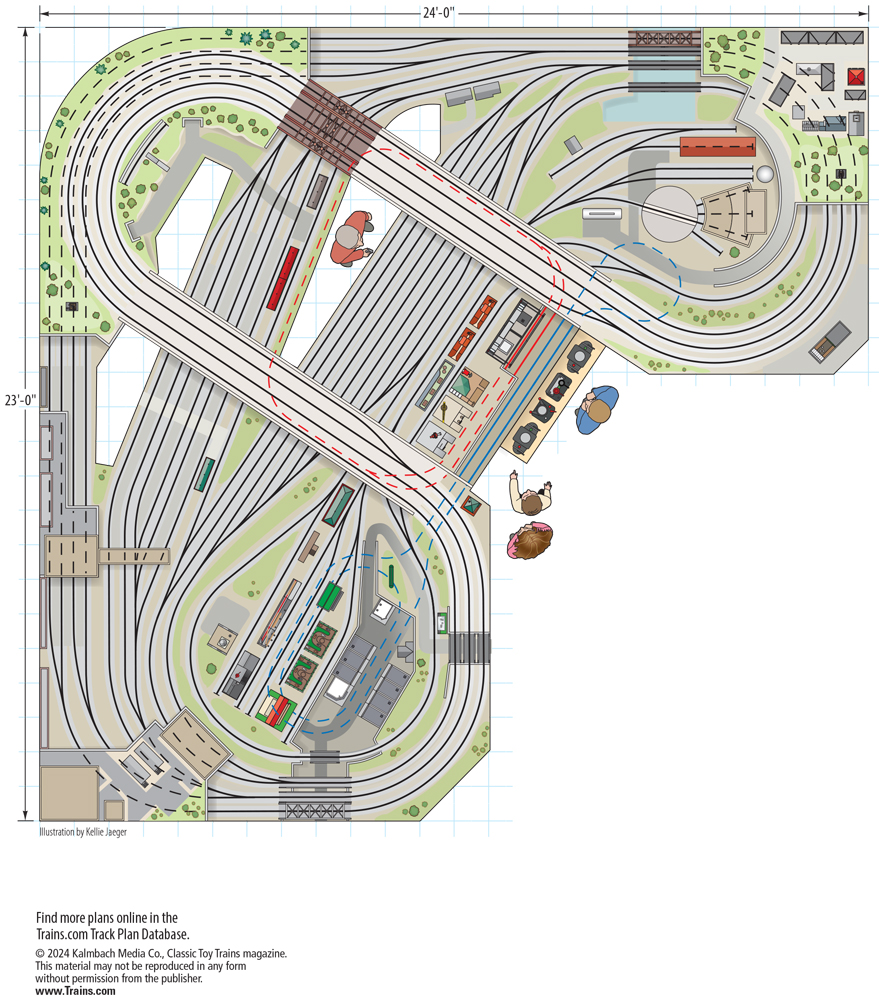
Please note: Due to a technical glitch in our software, the camera angles for this track plan did not appear in the Spring 2024 issue. We’re sharing that image here. We apologize for the omission. – Ed. Name: Jack Hedge’s O gauge layout Dimensions: 23 x 24 feet Track: GarGraves (diameters range from 72” to […]
Read More…
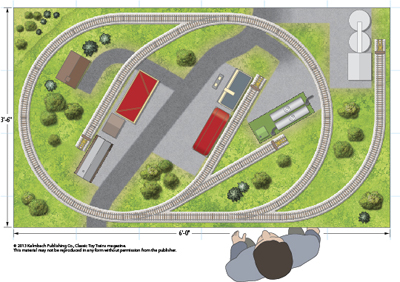
Layout designer: William Holt Scale: S Layout size: 3.5 x 6 feet Track type: MTH S-Trax Minimum curve: R-19 curve Originally appeared in the November 2013 issue of Classic Toy Trains. An S gauge starter set oval with add-ons An S gauge starter set oval with add-ons schematic An S gauge starter set oval […]
Read More…
![Lionel Rio Grande and Missouri Pacific 6464 boxcars], tends to attract attention](https://www.trains.com/wp-content/uploads/2021/01/CTT_how_to_value_toy_trains3_0121.jpg)
One of the most frequent questions Classic Toy Trains readers ask is, “What are my trains worth?” It’s hard to get an accurate answer. There are some key points to consider: Demand Toy trains’ increase in value depends on: • Are the cars well known throughout the hobby and therefore attractive to potential purchasers? • […]
Read More…
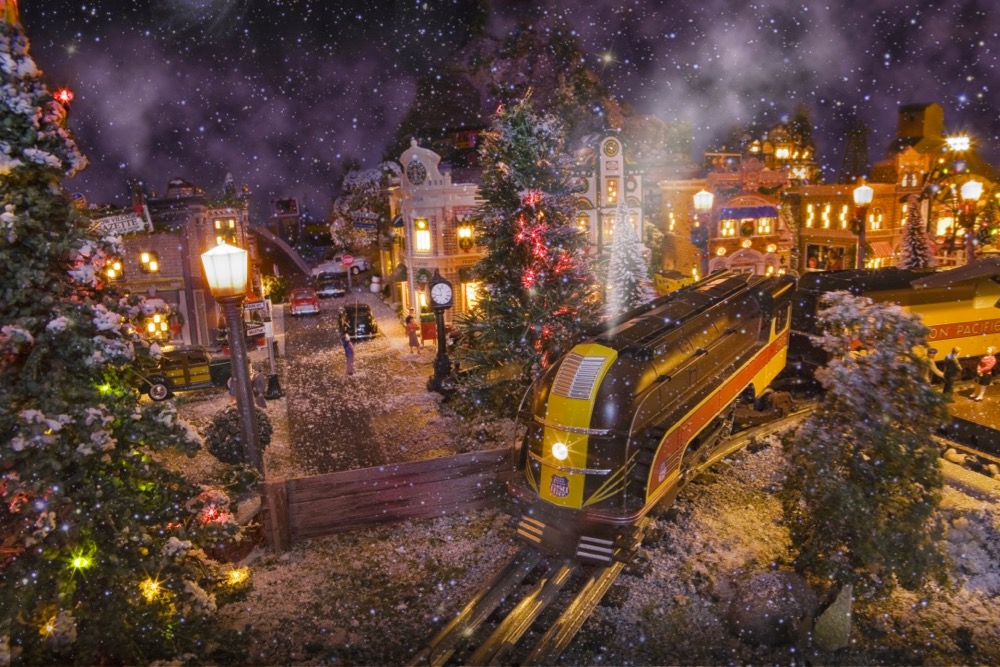
A version of this article appeared in the December 2017 issue of Classic Toy Trains. Whenever Classic Toy Trains features a layout distinguished by snowy scenes and Santa Claus plus his reindeer, readers naturally assume whoever built it did so while a blizzard raged and icicles formed on eaves and downspouts. They can’t help envisioning […]
Read More…
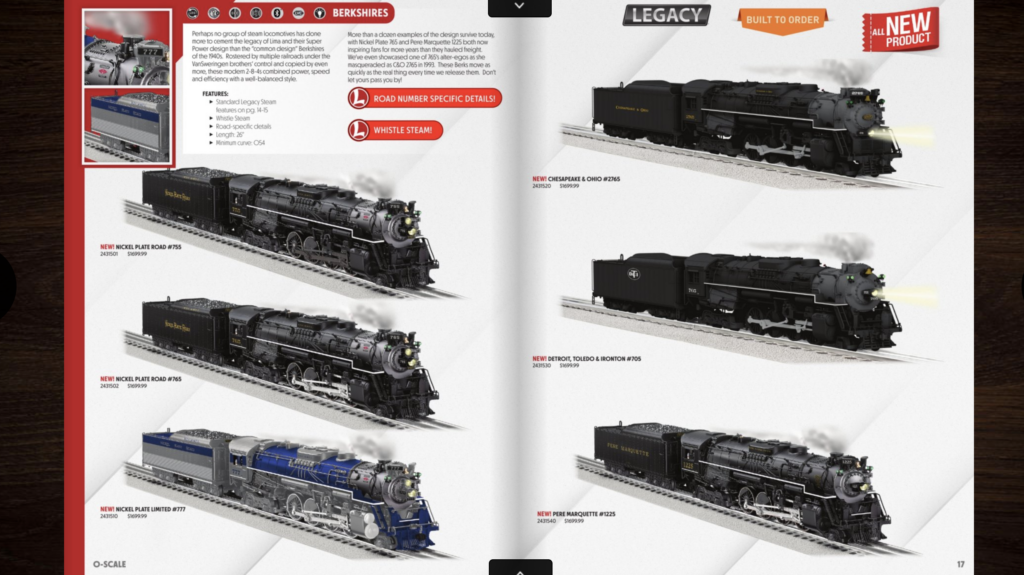
The Lionel 2024 Big Book catalog is here! At 228 pages, there’s a lot of products to sort through. I’ve given it a good luck and have thoughts and observations. Maybe you do too. If so, leave a comment or send an email to editor@classictoytrains.com Roger Carp explained the history of when Lionel releases catalogs […]
Read More…
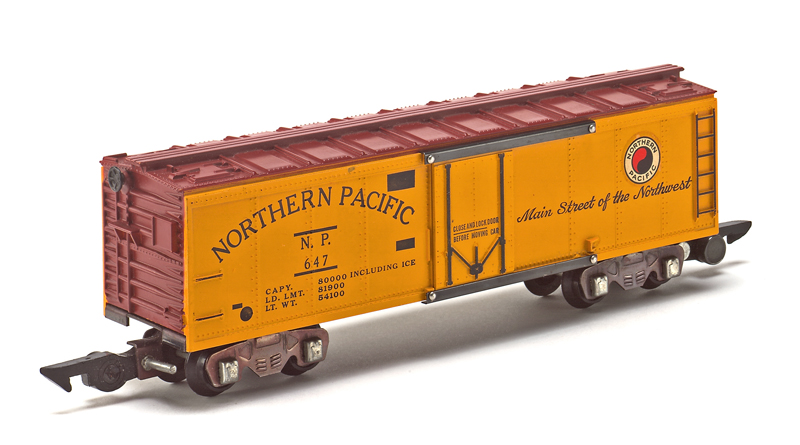
Glancing at the catalogs put out by the A.C. Gilbert Co. and the Lionel Corp. from 1952 or ’55 or ’58, you notice how similar the product lines were. Both Gilbert, which developed the American Flyer line of S gauge trains, and its rival marketed train sets at various price points to entice households with […]
Read More…
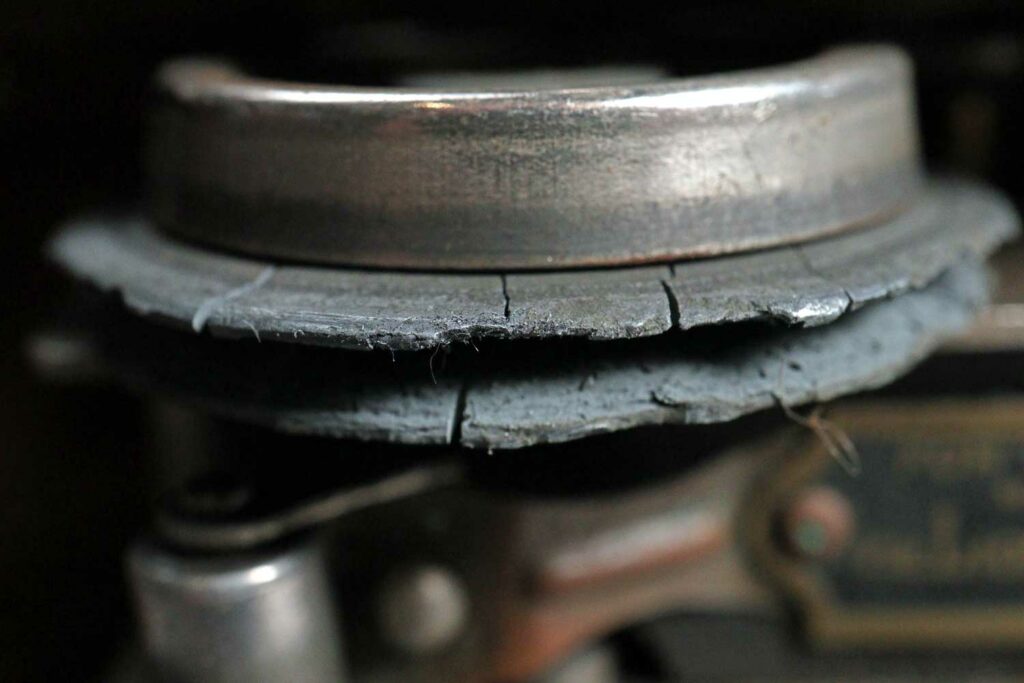
You may have heard the term “zinc pest,” or maybe “zinc rot” or “zamak pest,” but what is zinc pest? And how does it affect toy trains? In the earlier days of toy train manufacturing, trains and their parts were diecast with alloy metals, made from zinc, aluminum, magnesium, and copper. It was an inexpensive […]
Read More…
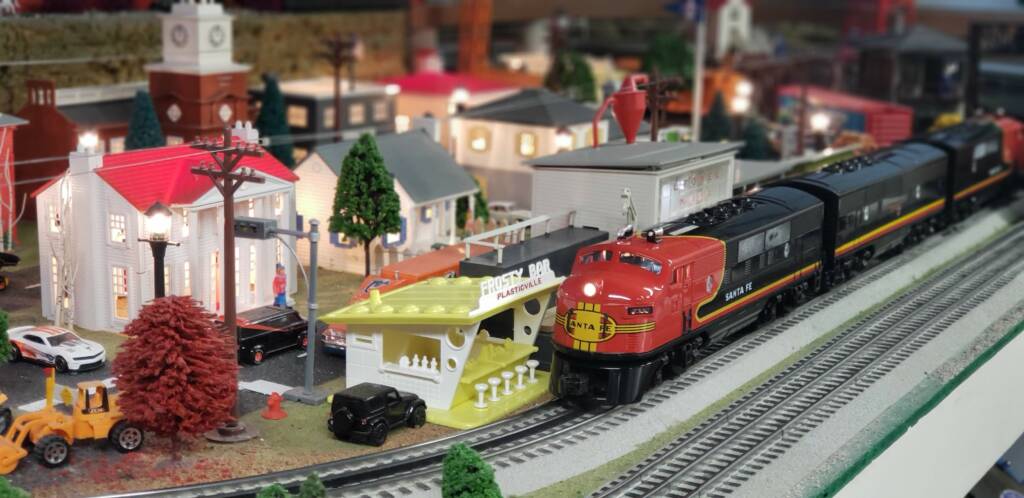
Design a toy train layout — O, S, or Standard/Wide gauge — it requires above all making one fundamental decision. Each operator must decide what sort of look he or she wants the layout to have. To be specific, each modeler has to figure out the extent to which the layout, regardless of size or […]
Read More…
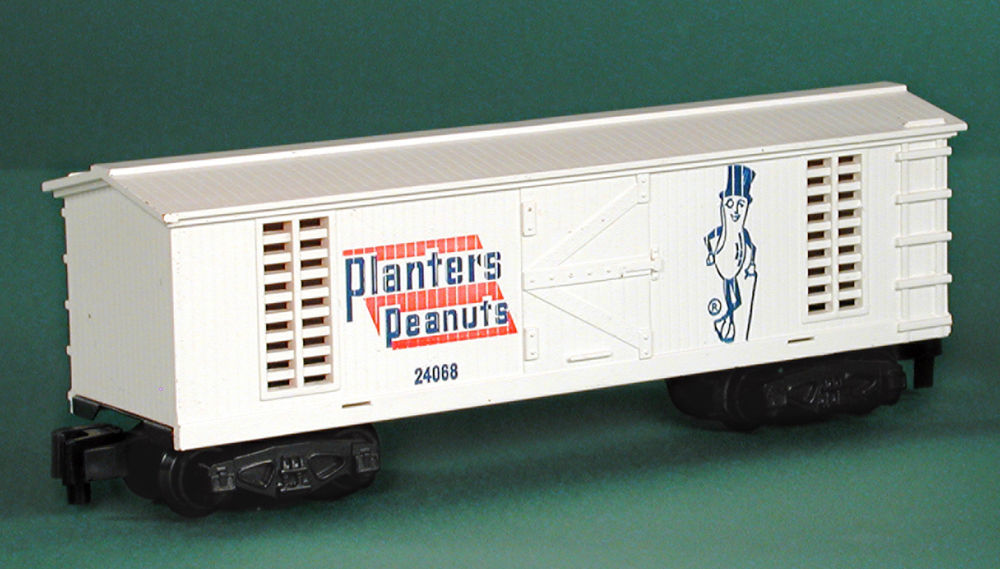
According to a document saved by Maury H. Romer, who supervised production of the postwar S gauge line, the A.C. Gilbert Co. intended to make a No. 24068 Mr. Peanut boxcar in 1962. It received a five-digit catalog number on Sept. 7, 1961. For unknown reasons, the project was abandoned after two prototypes were created. […]
Read More…





![Lionel Rio Grande and Missouri Pacific 6464 boxcars], tends to attract attention](https://www.trains.com/wp-content/uploads/2021/01/CTT_how_to_value_toy_trains3_0121.jpg)






